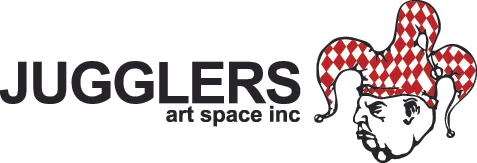Paper Boats
/Above Jugglers Artspace on Brunswick Street in Fortitude Valley is a large-scale mural by Brisbane street artist Guido Van Helten. It features a black and white image of a man whose contemplative gaze is directed above and beyond the bustling street and surrounding rooftops. Helten created this tangible image from a photograph and subsequent drawing on paper. Like most of his works, which are painted on water towers, reactors, building facades, and other public spaces around the world, the mural captures the man’s inner essence, and provides a gateway into exploring his story. It is the story Sha Sarwari.
Sha Sarwari is a former Hazara refugee from the Ghazni province in central Afghanistan. He made the long and treacherous journey to Australia in 1999, and after spending seven months in detention was relocated to Brisbane. It was here that Sha began his practice as a visual artist. He uses this practice to create multifaceted artworks that help him to understand and come to terms with his experiences, as well as to reflect upon the broader social and political issues affecting refugees and asylum seekers.
The multifaceted nature of Sha’s artworks can be seen in his ongoing boat and postcard projects. Here, he took the potent symbol of a boat and recreated it using newspaper and cardboard. When referenced in relation to refugees and asylum seekers, this familiar object conjures up a myriad of catch phrases and headlines such as ‘stop the boats,’ ‘turn the boats around,’ ‘illegal people,’ ‘queue jumpers,’ and ‘security threat.’ The newspapers Sha selected featured these generalised mass media headlines. To counteract their claims and provide a personal insight into the plight of forced migrants, Sha concealed the words with a hand written script of his own story of arriving in Australia and his time in detention. He then took a photograph of this multi-layered object and turned it into a postcard, which he distributed around the suburbs of Brisbane, asking people to return to sender their thoughts on refugees and asylum seekers. The few responses he received were mainly positive, and these were displayed in his 2015 exhibition at Jugglers Artspace, alongside those that remained blank, or as captured in their title, reference a silent conversation. This ongoing process of taking a singular object and recreating it into a series of alternative forms, allows for an endless conversation that reflects the personal and collective complexities and perceptions of refugees and asylum seekers.
The most recent addition to Sha’s project was a ceremonial burning of the paper boat. This overtly symbolic and moving moment occurred in the early hours of the morning on a deserted beach in northern New South Wales. With the light of a full moon, Sha and his wife Affifa dragged the boat onto the beach, and as the sun began to rise, covered it in turps, set it alight, and watched it burn. This powerful act encompassed Sha’s journey to Australia, where there were boats, destruction, flames, and fire. Despite this, it was an incredibly peaceful and contemplative process that allowed Sha to come to terms with what happened, let some of the pieces go, but never forget them. He captured this inability to forget through collecting jars of ash, which will now be used to continue the project.
Art is a powerful medium for both reflecting reality and imagining an alternative. It is the space or tension between these states, where the transformative ability of art lies. This tension is not only seen in the burning of the boat, but in Helten’s mural. The painting, which was created from a photograph and drawing on paper, references both the paper boat and the layered nature of Sha’s art practice. Helten creased and folded the drawing of Sha into an origami boat. The delicate construction was then unfolded, and it is this image, with its intimate creases and folds, that Helten recreates in his mural. The process of unfolding, similar to that of burning, marks a coming to terms with, exploring, discovering, and letting go, and yet, the presence of the paper’s crinkly surface, like the ash that remains from the boat, reveals that our experiences can never be forgotten, but instead become part of who we are.
Helten’s mural captures the personal story of Sha Sarwari – a story that refugees and asylum seekers can both relate to, and use as a symbol of hope as they embark on a journey to create a new life in a foreign land.
Alice-Anne Psaltis 2016

